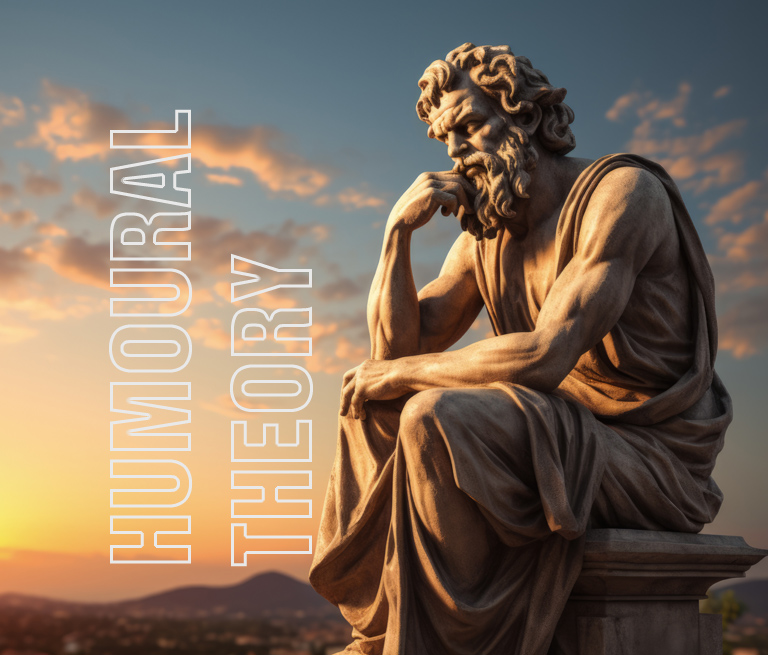Humours

In the discussion on the Tibb principle of “Temperament” we highlighted that each individual has a unique temperamental combination with an ideal qualitative state made-up from the four qualities. Maintaining this idea qualitative state is essential for an individual to remain healthy and well. The maintenance of this ideal qualitative state is facilitated by the humours. Humours also known as primary body fluids, are produced by the liver after the process of digestion and transformation of food and drink.
In keeping with the Tibb philosophical principles of elements/primary matter, humours exist at both a physical and metaphysical level, each one reflecting a fluid or flow of a biological force or energy in the body. Every level of organisation within the body is infused by and interconnected with the humours
In addition to maintaining the ideal qualitative state of individuals temperament, humours also have two other important functions:
- Providing nutrition for the maintenance of the body’s complex structure by restoring tissues and organs.
- Provides the energy requirements for the various activities of the body.
Humours similar to temperament are also four with respective qualities:
- Sanguinous humour – also known as blood (Qualities: Hot and Moist)
- Phlegmatic humour – also known as phlegm/serous (Qualities: Cold and Moist)
- Melancholic humour – also known as black bile (Qualities: Cold and Dry)
- Bilious humour – also known as yellow bile (Qualities: Hot and Dry)
Just as each individual has a unique temperamental combination, with an overall qualitative state, each person also has a unique ratio of humours and qualities to match the qualitative state of an individual’s temperamental combination. For example, a person who has a dominant sanguinous temperament will have slightly more of the sanguinous humour to maintain the ideal heat and moisture associated with this temperament. Similarly, this is the case with the other temperamental types.
In Tibb, we understand that for health to be maintained, the overall quality/ies of the humours should be the same as the overall quality/ies of the temperamental combination. For example, an individual with a dominant sanguinous and sub-dominant phlegmatic temperament will have an overall dominant quality of moistness followed by heat, less of coldness and the least amount of dryness. Health will only be maintained as long as the overall quality of the humours are the same as the qualities of the individual’s temperamental combination i.e. dominant quality of moistness followed by heat, less of coldness and the least amount of dryness.
The humoral theory was conceptualised by Hippocrates 2500 years ago – he postulated humours as being:
“…Those moist and fluid parts of the body which are produced after the transformation and metabolism of the aliments (diet); serve the function of nutrition, growth and repair; and produce energy, for the preservation of the individual and his species. A right proportion and inter-mixture (homeostasis) of them, according to the quantity and quality constitutes health, whereas an imbalance according to the quantity or quality and irregular distribution leads to disease”.
Conducting research and validating the humoral theory has been a focus at the Institute’s clinics over the past few years. The positive results have convinced us that the humoral theory hypothesised by Hippocrates is as relevant today as it was more than two thousand years ago.